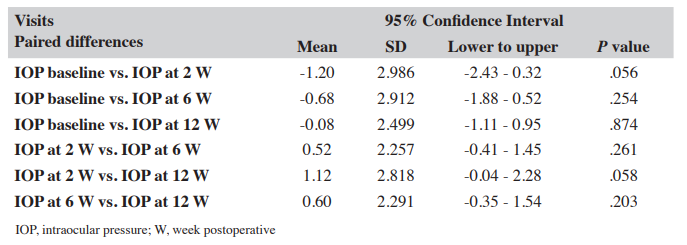Increased Intraocular Pressure after Upper Eyelid Surgery in Thammasat University Hospital: An Observational Study
Main Article Content
Abstract
Purpose: Upper eyelid surgery may be associated with significant elevation in the intraocular pressure (IOP) levels exerted by the pressure of upper eyelid on the cornea. Increasing IOP is a well-known risk factor for glaucoma. This study evaluated the dynamic change of intraocular pressure and corneal curvature change in patients undergoing upper eyelid surgery to provide data to explore the need for early detection of patients with increased risk of glaucoma before undergoing eyelid surgical procedures.
Methods: A prospective observational study was conducted on seventeen patients (25 eyes in total) who were scheduled for upper eyelid surgery in one or both eyes. IOP measurements were taken at baseline and 2, 6, 12 weeks after upper eyelid surgery with an indication of ptosis and/or mild to moderate dermatochalasis.
Results: Data was collected from 25 eyes in 17 patients. 82% of the study group were females. Mean age was 58.92 ± 15.95 years. The mean baseline preoperative IOP was 13.20 ± 2.48 mmHg. There was no significant change in IOP and K1 (corneal curvature at 90 degrees) between baseline pre-and-postoperative IOP at 2, 6 and 12 weeks after surgery.
Conclusions: There is no significant change in variation of IOP or K1 steepening after upper eyelid blepharoplasty (P value > .05 in both comparative tests), within limitations of a small-sample sized study.
Article Details

This work is licensed under a Creative Commons Attribution-NonCommercial-NoDerivatives 4.0 International License.
References
Yang P, Ko AC, Kikkawa DO, Korn BS. Upper eyelid blepharoplasty: evaluation, treatment, and complication minimization.
Semin Plast Surg 2017;31:51-7.
Leske MC, Heijl A, Hussein M, Bengtsson B, Hyman L, Komaroff E, et al. Early Manifest Glaucoma Trial Group. Factors for glaucoma progression and the effect of treatment: the early manifest glaucoma trial. Arch Ophthalmol 2003;121:48-56.
Osaki TH, Osaki MH, Ohkawara LE, Osaki T, Gameiro GR, Melo LAS Jr. Possible Influence of Upper Blepharoplasty on Intraocular Pressure. Ophthalmic Plast Reconstr Surg 2020;36(4):346-8.
Turker IC, Dogan CU. Evaluating the Effects of Upper Eyelid Blepharoplasty on Tear Film Quality and Intraocular Pressure. Beyoglu Eye J 2020;5(3):169-73.
Turker IC, Dogan CU. Evaluating the Effects of Upper Eyelid Blepharoplasty on Tear Film Quality and Intraocular Pressure. Beyoglu Eye J 2020;5(3):169-73.
Naik MN, Honavar SG, Das S, Desai S, Dhepe N. Blepharoplasty: an overview. J Cutan Aesthet Surg 2009;2(1):6-11.
Kappen IFPM, Nguyen DT, Vos A, Tits HWHJ. Primary angle-closure glaucoma, a rare but severe complication after blepharoplasty: case report and review of the literature. Arch Plast Surg 2018;45:384-7.
Wride NK, Sanders R. Blindness from acute angle-closure glaucoma after blepharoplasty. Ophthalmic Plast Reconstr Surg 2004;20:476-8.
Stevens S, Gilbert C, Astbury N. How to measure intraocular pressure: applanation tonometry. Community Eye Health. 2007 Dec;20(64):74-5. Erratum in: Community Eye Health. 2008 Jun;21(66):34. PMID: 18330450; PMCID: PMC2206330.
Cosmetic Blepharoplasty, Joe Niamt, Cosmetic Facial Surgery, Mosby 2011,Pages 129-174, ISBN9780323074001, https://doi.org/10.1016/B978-0-323-07400-1.000075. (https://www.sciencedirect.com/science/article/pii/B978032307400 1000075)
Simsek IB, Yilmaz B, Yildiz S, Artunay O. Effect of upper eyelid blepharoplasty on vision and corneal tomographic changes measured by pentacam. Orbit 2015;34:263-7.
Kim YK, In JH, Jang SY. Changes in corneal curvature after upper eyelid surgery measured by corneal topography. J Craniofac Surg 2016;27:235-8.
Jayaram H. Intraocular pressure reduction in glaucoma: Does every mmHg count? Taiwan J Ophthalmol 2020;10(4):255-8.


